If you are considering building a new home or remodeling your current one, you may be wondering what kinds of windows to plan for your living room. It's important to choose your living room windows carefully, for several reasons:
- Design - The style of window you choose will have ramifications for your home and living room's appearance and feel. Some window styles project a modern appearance, while others contribute a classic feel to your home. In addition, the size and placement of windows play an important role in the overall design of the room.
- Light - Most living rooms feature large windows that let in abundant natural light. Adding bay or bow windows, large picture windows, or skylights can make your living room a bright, cheery space; on the other hand, having just a few small windows can render the room darker and cozier.
- Energy Efficiency - The size, type, and quality of windows you select can have major implications for your home's energy efficiency. Knowing which type of windows provide the greatest overall efficiency can help you decide which ones to include in your living room.
- Cost - The costs of different types of living room windows vary greatly, from $200 to $300 for a single-hung window (installed) to as much as $4,000 for a new bay or bow window. You must take your budget into account, along with design, lighting, and energy-efficiency considerations, when choosing your windows.
This article will describe each of the fourteen most common types of living room windows, as well as the advantages and disadvantages of each type. Keep reading to learn more!
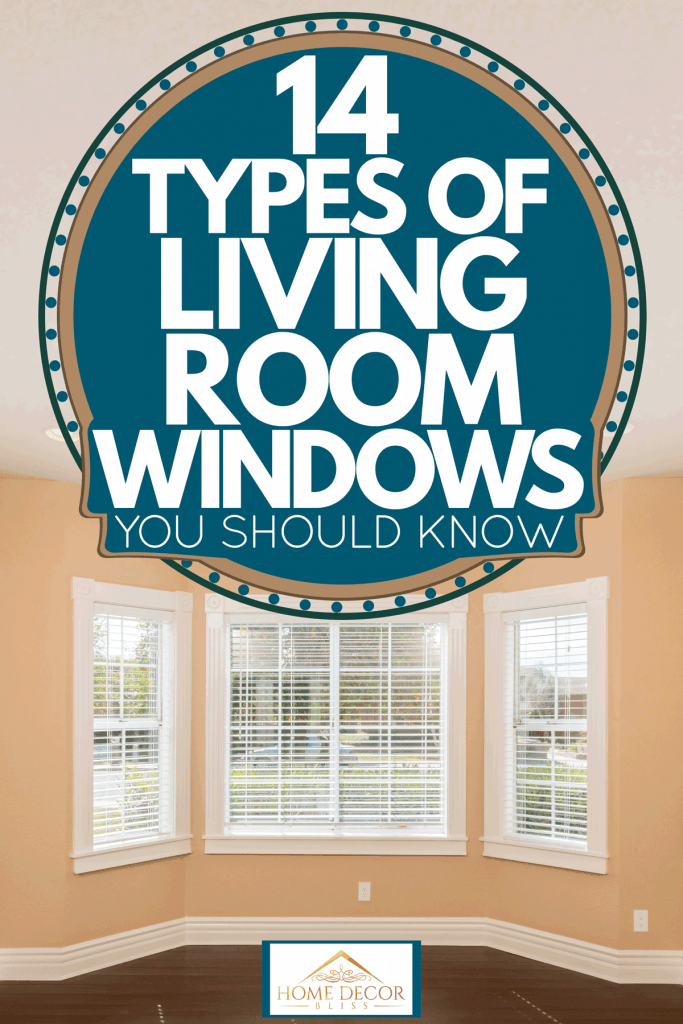
1. Single-Hung
Single-hung windows consist of two sashes: the top one is stationary, and the bottom one slides up and down on a track. Sliding the bottom sash up over the top one opens the window to provide ventilation. Single-hung windows are typically found in sheds and older mobile homes, but they can be used in buildings of any type.
We may include affiliate links and curated AI content to highlight top design styles.
Click here for a vinyl single-hung window on Amazon.
The major advantages of single-hung windows are:
- They are among the least expensive types of windows.
- They are relatively simple to install.
The primary disadvantages of single-hung windows include:
- They are generally of lower quality than other windows, with shorter lives and lower energy efficiency.
- Because the top sash is stationary, single-hung windows do not provide the flexibility or convenience of double-hung windows.
2. Double-Hung
Double-hung windows are the most popular form of window available. They feature two sashes, one above the other, in separate tracks. Both sashes move vertically to open the window and provide ventilation. In addition, the sashes on most double-hung windows tilt inward for easy cleaning.
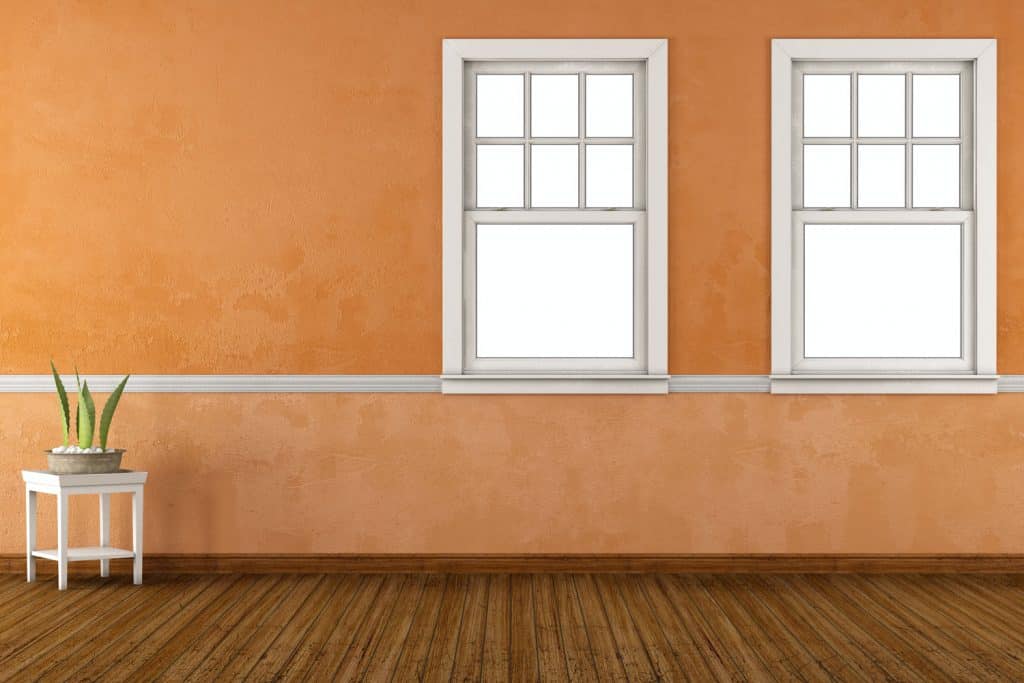
The main advantages of double-hung windows include:
- Double-hung windows are of higher quality than single-hung.
- Their moveable and tiltable sashes provide flexibility in ventilation and convenience for cleaning.
- Their double-locking system seals the two sashes tightly for optimal energy efficiency.
The disadvantages are:
- Double-hung windows cost more than single-hung.
- They require yearly cleaning and maintenance of their hardware to keep them functioning optimally. This is particularly true of older models.
3. Casement
Casement windows consist of either a single sash or a pair of sashes placed side-by-side in a frame. They typically feature a screen on the room's interior, and the windows open outward by use of a crank. As you can see below, the two inner windows in this array are stationary; the outer two open via cranks.

The primary advantages of casement windows are:
- They provide an unobstructed view, with little interference from framing.
- Because they swing out from the side, they are excellent ventilators.
- They are among the most energy-efficient windows due to the tight seal between the sash and frame.
Their disadvantages include:
- The sash's total weight must be low enough that the frame can support it when the window is open, so the overall size of a casement window is limited.
- Due to the outward-opening sash, window air conditioners cannot be installed in casement windows.
4. Sliding
Like single- and double-hung types, sliding windows feature two separate sashes, one of which slides open over the other. However, sliders are oriented horizontally. Some of them have only one moveable sash, while on others, both sashes move.

Advantages of sliding windows include:
- They come in a wide variety of sizes, making them ideal for use in long, narrow horizontal wall spaces.
- They are ideal for ventilation and allow maximum natural light into a room.
Sliding windows also have some disadvantages:
- Their exterior faces must be cleaned from the outside of the house, which can be challenging if there is shrubbery beneath your living room window.
- They don't seal as tightly as casement or awning windows, making them less energy-efficient.
- Water can accumulate in the bottom track, potentially leading to mildewing or rot.
Click here for a sliding window on Amazon.
5. Awning
Awning windows are single-sash windows that are hinged at the top and open outward at the bottom. They are particularly popular in rainy climates because their unusual opening method allows for ventilation while the window itself acts like an awning, deflecting rain. They add a sleek, modern look to a home.

Awning windows have two primary advantages:
- They provide ventilation on rainy days without allowing water inside.
- They seal tightly when closed for excellent energy efficiency.
- Because they do not open widely, they provide better security than most moveable windows.
The major disadvantages include:
- They do not open far, so their ventilating properties are limited.
- People outdoors can run into the protruding sashes.
Click here for an awning window on Amazon.
6. Picture
One of the most popular types of living room windows is the picture window. It consists of a single stationary expanse of glass within a large frame. Picture windows provide a clear, and often beautiful, view of the outdoors; they are often a focal point of a living room.

Picture windows have the following advantages:
- They allow a great deal of natural light into the room.
- They provide excellent views of the outdoors.
- Picture windows have no moving parts, so their initial price and their maintenance costs are relatively low.
- They are highly energy-efficient, especially if the panes are low-E coated and argon-filled.
However, they also have three major disadvantages:
- Because they are so large, they can allow a great deal of the sun's heat into the room, which can be a disadvantage on warm days.
- If a picture window breaks, a large expanse of glass must be replaced, which can be expensive.
- Picture windows do not open, so they do not provide any ventilation.
7. Bay
Bay windows are actually composed of multiple windows, incorporated into a protrusion built out from the side of the house. Typically, a bay window includes one sash in the center and two sashes flanking it at 30- or 40-degree angles. Inside the home, a storage or seating area is often built into the wall under the windows. In classic-style homes, bay windows are typically double-hung; modern homes sometimes use stationary or openable casement windows.
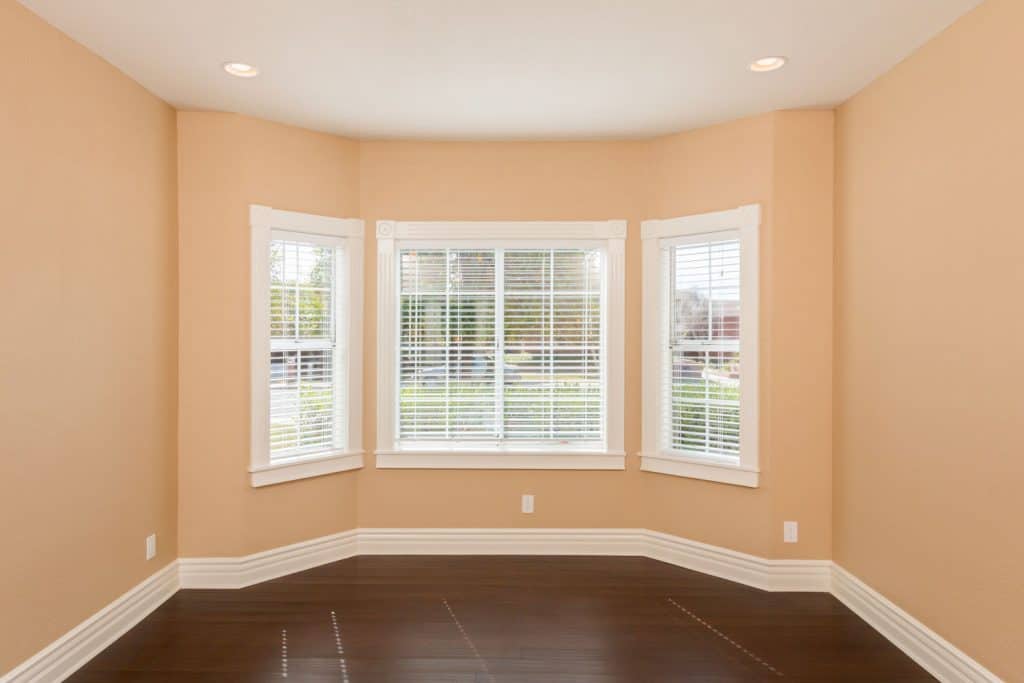
The three major advantages of bay windows are:
- They are excellent for allowing natural light into the living room.
- Having one or more bay windows adds to the home's value.
- Adding seating or storage to the bay window area can increase the utility and comfort of the room.
Disadvantages include:
- Bay windows require build-out, as well as multiple windows, so they are quite expensive.
- Adding window treatments can be challenging and usually requires a professional.
8. Bow
A bow window is similar to a bay window but with a rounded, rather than faceted exterior. A typical bow window consists of five identical sashes, each glazed with custom-curved glass.
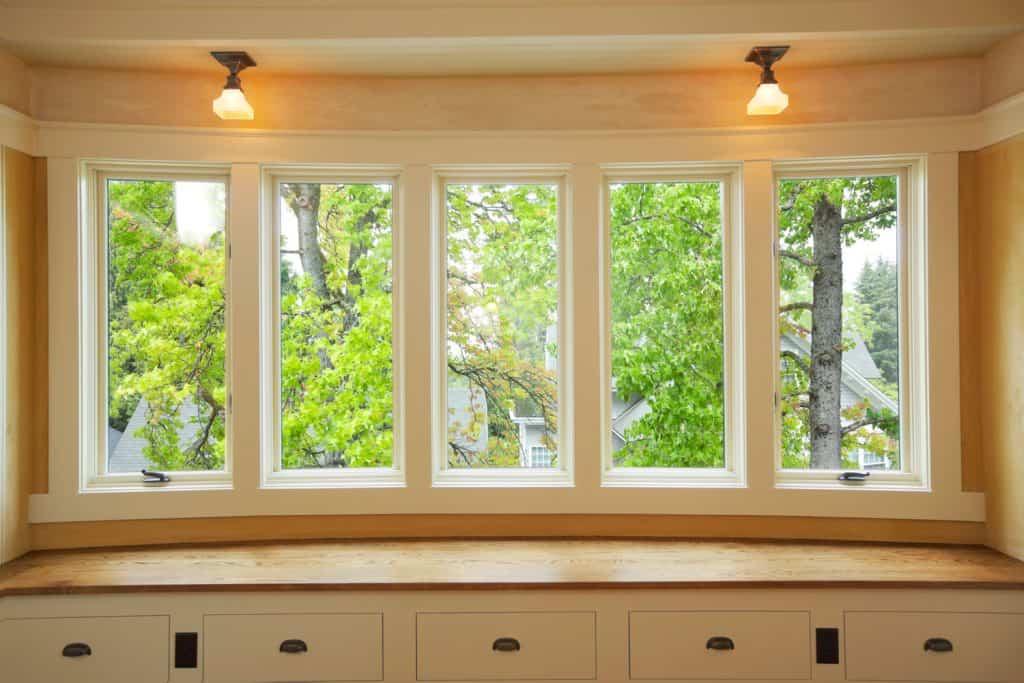
The advantages and disadvantages of bow windows are identical to those of bay windows:
- A bow window lets natural lighting into the living room.
- Adding a bow window increases the value of the home.
- The addition of seating or storage can improve the useability of the room.
- Installing a bow window is approximately as expensive as a bay window.
- Installing window treatments is equally challenging in a bow window.
9. Arched
Arched windows are decorative, adding architectural interest and sophistication to a home. They come in a range of sizes and are generally placed above picture or casement windows.
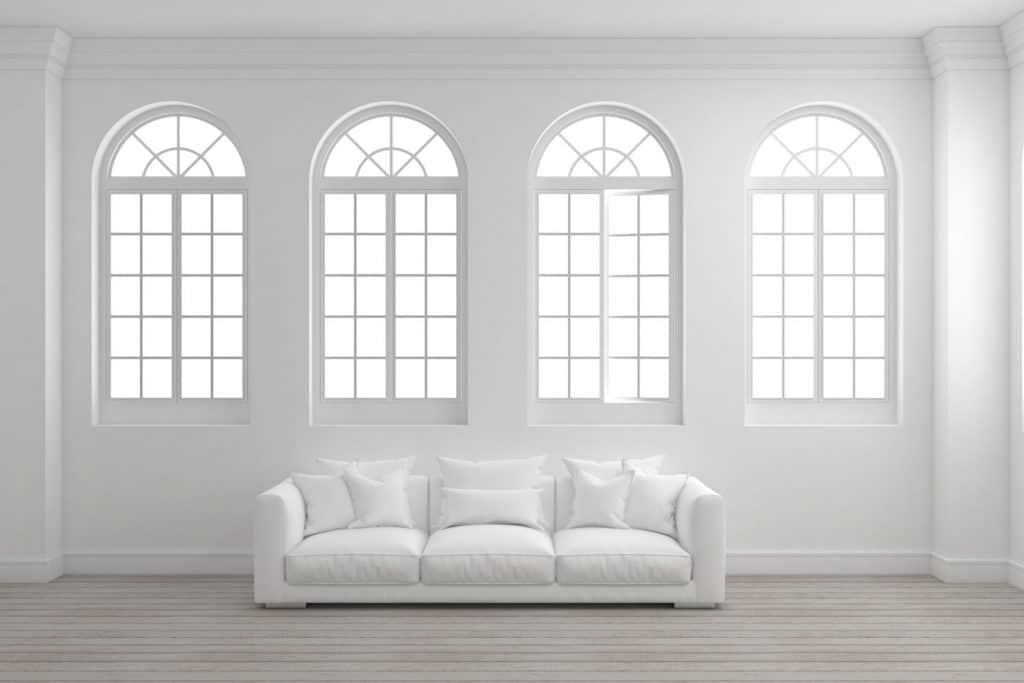
Arched windows have two advantages:
- They add timeless class to a home.
- They come in a variety of sizes and arc shapes, making them versatile for topping nearly any existing window.
Arched windows also have a couple of drawbacks:
- They do not open; thus, they do not provide ventilation.
- Although they are not overly expensive, adding an arched window above an existing window does add cost.
10. Jalousie
Jalousie (pronounced JAL-uh-see) windows are comprised of multiple slats of tempered glass in a special frame that allows them to be cranked open. Like awning windows, jalousies are popular in rainy, tropical, and subtropical areas.
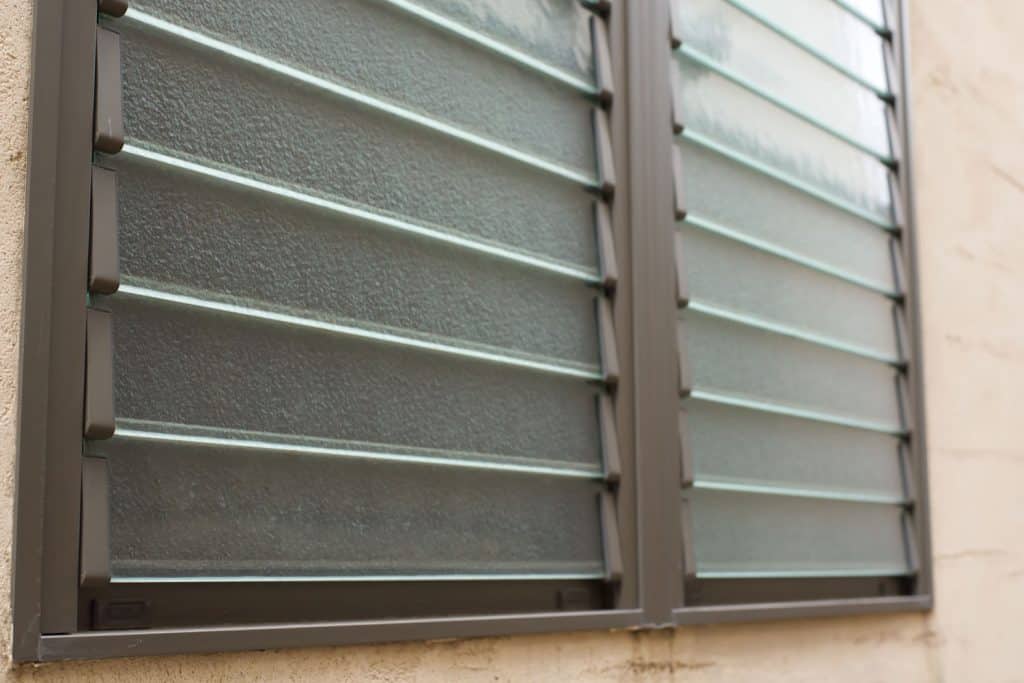
The advantages of jalousie windows include:
- The slats open from the bottom and tilt, providing ventilation while shedding rain.
- They block direct sunlight, which is an advantage in hot climates.
- They are among the least expensive windows to purchase and install.
There are also two major disadvantages:
- Jalousie windows, with their slats of glass and no weatherstripping, are not energy-efficient.
- They are a security risk, as the slats can be removed easily and soundlessly.
11. Garden
Like bay and bow windows, garden windows protrude from the exterior of the house; but the similarity stops there. Garden windows are specifically intended to serve as showcases for indoor plants. They feature wood platform floors, with glass on all three exterior sides and the top. They are much smaller than bay or bow windows and do not require nearly as much exterior build-out.
Advantages of garden windows include:
- They provide a bright, sunny spot for indoor plants and flowers to grow.
- Garden windows add a focal point to a living room.
Garden windows have three disadvantages:
- They are expensive to install, costing up to $4,000.
- Because they project from the exterior of the home, they are particularly vulnerable to damage.
- If not carefully sealed during installation, garden windows can allow air leakage, reducing their energy efficiency.
12. Transom
Transom windows are mainly decorative, although they serve to allow more natural light into the room. They are long, narrow rectangular or arched windows that are installed either above or alongside larger windows. Depending on their style, transom windows can add a touch of modernity or a classic aura to a home.

Transom windows offer several advantages:
- They add natural light to the room.
- A transom window adds architectural interest, emphasizing the modern or classic aura of the home.
- Adding transom windows increases the curb appeal and value of a home.
They also have two disadvantages:
- Because transom windows do not open, they cannot provide ventilation.
- The additional sunlight beaming through transom windows can result in overheating the room.
13. Circle
Circle windows are also mainly decorative in function. They are most often used in classic Gothic and Victorian homes.
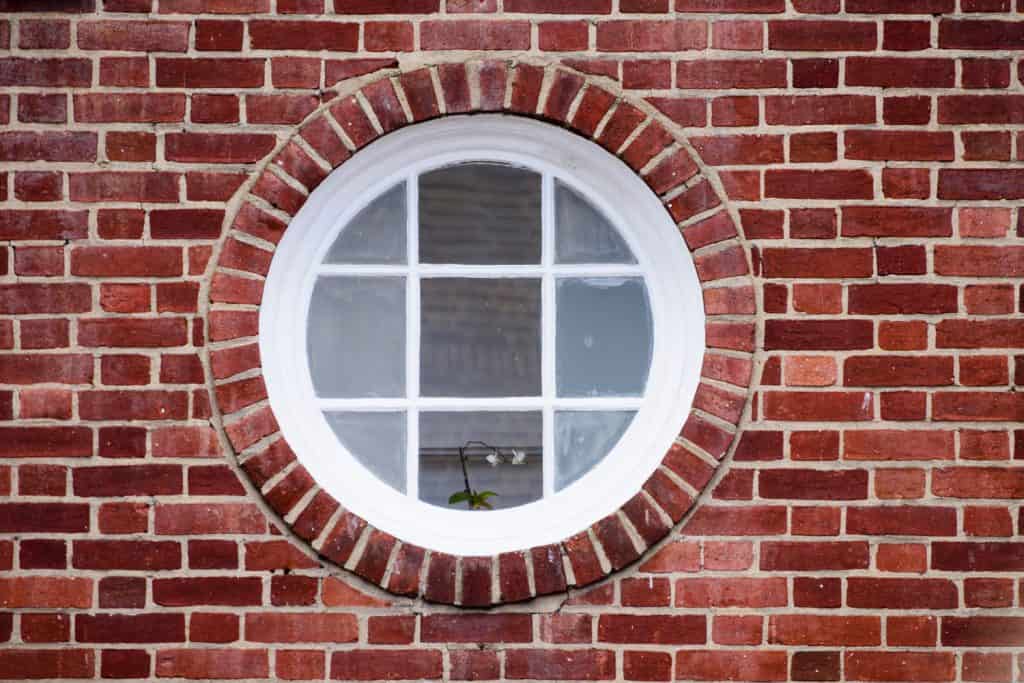
The two major advantages of circle windows are:
- They allow additional natural light into the room.
- Circle windows provide authentic architectural detail in Gothic and Victorian homes.
Disadvantages include:
- Circle windows do not open, so they cannot provide ventilation.
- Because they are intended to be decorative accents, the installation of a circle window adds to the overall expense of windows in the home.
14. Skylight
Skylights are installed on the roof of a home. Their major function is to provide natural light, although some skylights can open for ventilation.
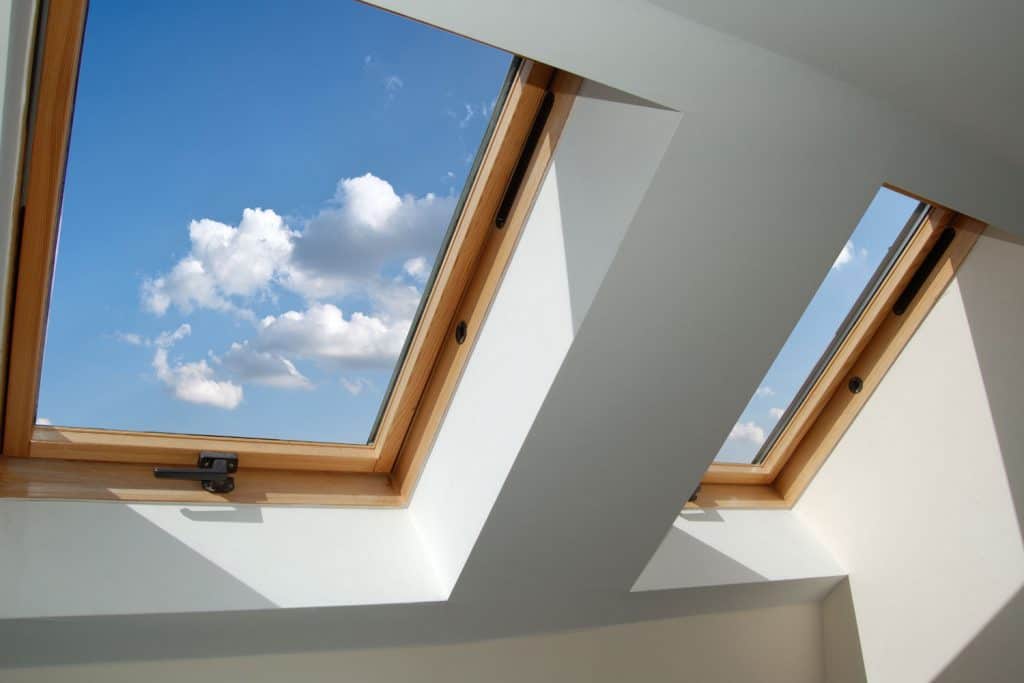
The advantages of skylights include:
- They allow a great deal of natural light into the room, particularly in gloomy winter months.
- By redicomg lighting bills and allowing the sun's heat into the home during winter, skylights can reduce energy bills.
- A skylight can make a dramatic design statement, especially in modern or postmodern homes.
Skylights also have some disadvantages:
- They are vulnerable to overlighting or overheating a room, especially if the skylight does not open.
- Installation of skylights is tricky: if flashing is not properly applied, roof leaks can result.
Click here for a skylight on Amazon.
In Conclusion
If you're remodeling or planning a new home, choosing living room windows is a critical decision. It has implications for design, comfort, and energy efficiency. Following the guidelines above, you can select the best choices for your unique needs.
You may also enjoy:
23 Light Blue Living Room Ideas
How To Brighten A Living Room Without Windows






